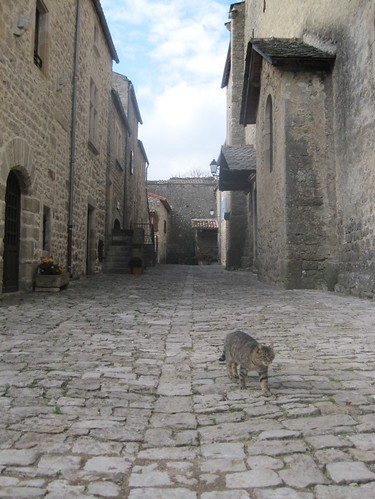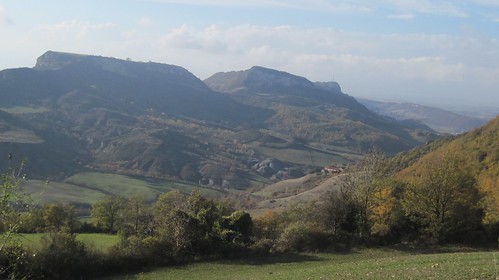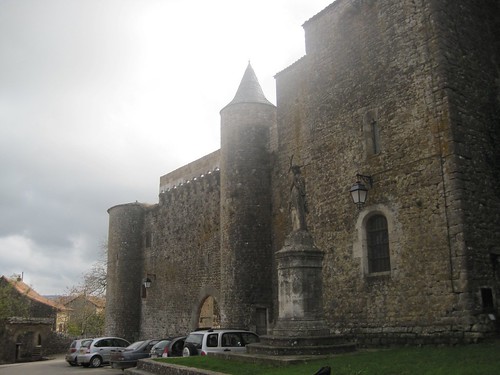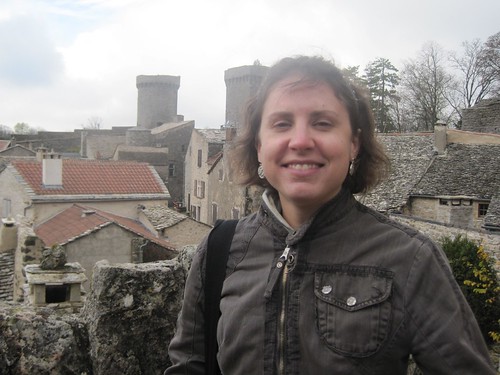Their influence extended through much of France and into Italy, Germany and England. However, with the end of the crusades, the Templars' purpose was less well defined. Eventually, they seemed redundant with other militaristic orders including the Teutonic knights and Hospitallers. On Friday the 13th of October 1307, King Philip IV of France ordered the knights arrested and the leaders executed. His prime motivation was to eliminate large debts owed by the crown to the order.
Many of the Templars' lands were transferred to other orders, like the Hospitallers. Interestingly, some of the best preserved Templarand Hospitaller sites are located in the Averyon department of France. Perhaps it was the remote location and undulating natural landscape that generally spared the religious edifices from later upheavals around the country. Even so, the Hospitallers fortified many of the villages for security during the Hundred Years War.
We explored two Templar & Hospitaller settlements during our weekend trip to the region. An easy to follow driving circuit directs visitors to up to five different sites. For the past decade a regional council has been working to preserve the Templar and Hospitaller heritage of the area.
 The first site we visited was located on a hilltop overlooking an extensive plateau of sheep grazing fields. Saint-Jean d'Alcas is a small rectangular fort containing round towers at each corner. The small homes built into the fortress wall are all practically identical. A small abbey was also integrated into the defensive construction. Today, only a few shops and a tourist information desk keep residence within the small outpost. A lone cat greeted our entrance.
The first site we visited was located on a hilltop overlooking an extensive plateau of sheep grazing fields. Saint-Jean d'Alcas is a small rectangular fort containing round towers at each corner. The small homes built into the fortress wall are all practically identical. A small abbey was also integrated into the defensive construction. Today, only a few shops and a tourist information desk keep residence within the small outpost. A lone cat greeted our entrance. Twenty-five kilometers east, over rolling hills and through river gorges, we arrived at another historic site. The geography had changed substantially but the medieval architecture was familiar. At la Courvertoirade, visitors can explore the remains of a castle built by the Templars around 1200 and ramparts built by the Hospitallers in the 15th century. The scene standing near the gate of the old castle reminded Mary Ann of a castle scene in Robin Hood. I also thought that the church of the Hospitallers was unique, containing a few pagan symbols and creating a more mystic ambiance than most other churches of the era.
Twenty-five kilometers east, over rolling hills and through river gorges, we arrived at another historic site. The geography had changed substantially but the medieval architecture was familiar. At la Courvertoirade, visitors can explore the remains of a castle built by the Templars around 1200 and ramparts built by the Hospitallers in the 15th century. The scene standing near the gate of the old castle reminded Mary Ann of a castle scene in Robin Hood. I also thought that the church of the Hospitallers was unique, containing a few pagan symbols and creating a more mystic ambiance than most other churches of the era.The course continued on to several more sites, but we had exhausted our time. These modest sites of the Larzac barely compare to other massive fortresses or religious sites in France. However, the historical intrigue associated with their founders keeps the tourists coming.



![Reblog this post [with Zemanta]](http://img.zemanta.com/reblog_e.png?x-id=0e62f28f-51ba-44cd-9abe-a91734d1d39a)

No comments:
Post a Comment